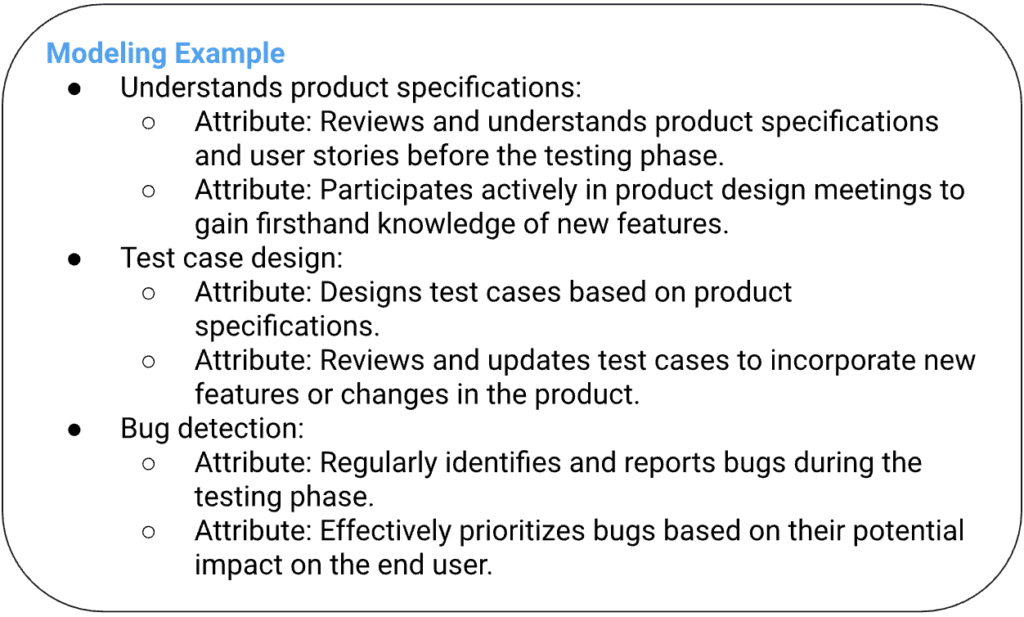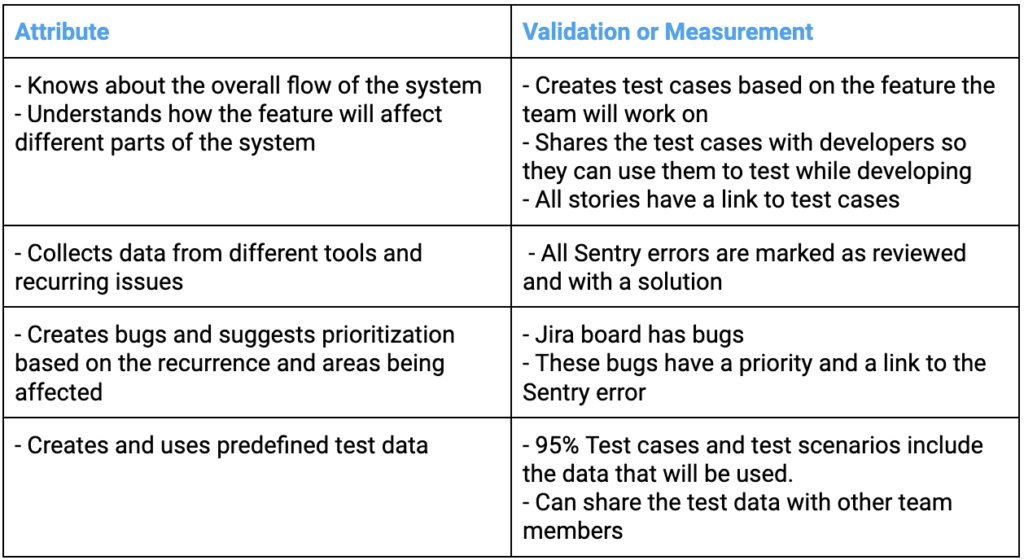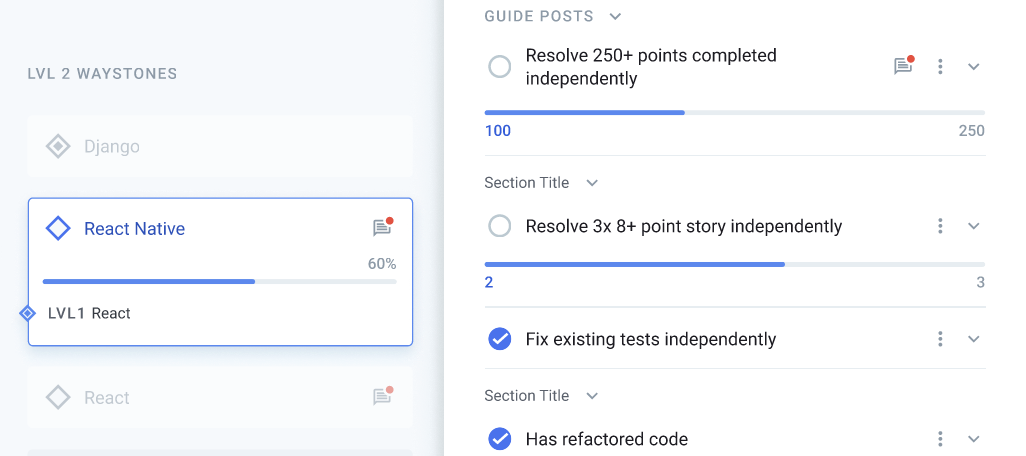This is a continuation of our “Get Started with Journeys for Your Teams” blog post series where we described how to get started with Agile Growth™ and take the first step into defining the first Journey for your team.
You’ve made it to Step 4 of our Journey Creation series, congratulations! Having modeled your milestones into tangible skills and knowledge attributes in Step 3, you are now ready to bring them to life by making them measurable.
In Agile Growth™ we aim to have clarity and transparency in our team. Every milestone within a Journey is clearly defined and measurable. This provides individuals with an unambiguous understanding of where they stand on their path and what they need to accomplish to advance.
Making Milestones Measurable
Making an attribute measurable can be as simple as defining how many times an action has been performed. For example, in the context of a sales role, an attribute like ‘Establishes new client relationships’ might be measured by ‘Secured meetings with 10 new potential clients.’
However, there are also times when the traditional quantitative metrics may not apply, particularly when it comes to soft skills. For instance, an attribute such as ‘Effectively communicates complex ideas’ is harder to quantify. This is where you need to be creative and leverage qualitative measures.
Leveraging Qualitative Measures
For soft skills and other difficult-to-measure attributes, consider using peer and managerial feedback as a measurement tool. Regular 360 reviews can provide an insightful perspective on an individual’s progress towards a milestone. Here, the measurement might look something like ‘Received positive feedback from at least 5 team members on communication skills.’
Remember, the aim is to create a balanced mix of quantitative and qualitative measures that together provide a holistic view of an individual’s progress.
Documenting Progress
One crucial aspect of this step is documentation. Ensure that progress is recorded in a consistent manner. It’s not only about recognizing when a milestone is achieved but also about understanding the journey towards that milestone.
To help with this, you might want to use a tool like waystones.io. Waystones provides an easy and accessible way to document and view progress towards milestones.
To sum up, making milestones measurable is a critical step in Agile Growth™. This helps transform abstract skillsets into concrete, achievable goals. It allows both the individual and the organization to have a clear understanding of where they stand and what needs to be done to keep advancing on the journey.
Below you will find the progress we have made on our QA example after transforming the attributes we modeled in Step 3 into measurable goals.

QA Example after making it measurable

Stay tuned for our next blog post where we’ll dive into Step 5: Make it a Path, where we will organize our milestones into a progression of skills, creating a roadmap for personal growth.
